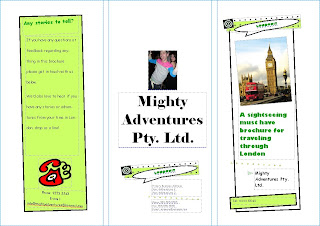Dust Echoes is part of the ABC network website where there are twelve animated dreamtime stories. The stories are about love, duty to coutry and aboriginal customs. It is interesting to note that the stories were originally recorded as audio files and made into short animated movies by various Australian animators.
I chose to look at the story called The Curse, where the spirit of Namorrodor is summoned by the witch doctor and terrorises the camp. It was well told and the animations were quite engaging and well made.

After having watched it, we cut still images from the video and pasted them in an attempt to tell the story visually. It was quite difficult to retell the story in eight pictures but I think the storyline is still able to be understood. I even tested this theory by asking my housemate to see if she could tell me the story and was more or less able to.
The task itself was good, again moving away from the simple paper form to this but on a
whole it was a little tedious with the constant print screening and cropping. After a while the creative aspect wore thin and I just wanted to get it done.
 We also looked at how we can use M&Ms to use in a lesson incorporating it with using ICT.
We also looked at how we can use M&Ms to use in a lesson incorporating it with using ICT. We used Excel to graph the number of coloured M&Ms in a packet and then created a bar graph with individual colours for the students to ad. This was quite easy to do and I could see the students enjoying putting their own colours and creating their own type of graphs to display the information.
Furthermore, this sort of activity could easily lead to navigating the M&Ms website and looking at various things, such as marketing, nutritional information - such as weights and ingredients - and conducting surveys and chance and data activities.
Computers can be used for so many things and not just for 'surfing the net'. I need to keep remembering that you can be very creative with its uses and make learning so much more interesting for students. I would definitely be looking at doing something like this when I have my own classroom next year - so long as I figure out how to do it again!



